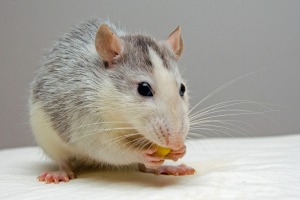Confused about all the different methods of training out there? What does the science say? What is the best way to train? What do the big words mean? Well read on and I will try to help you figure this out over the next few posts..
How animals learn is usually described in two broad categories. These categories are classical conditioning and operant conditioning. Big words but stick with me here and I will try to keep this as simple as I can. Today let’s look at classical conditioning.
Classical conditioning is also called Pavlovian conditioning or respondent conditioning. Phew I promise that is the big words out of the way.
So what is it? Have you heard of Pavlov’s dogs? Ivan Pavlov was a scientist studying the role of salivation in dog digestion in the 1920’s. To cut a long story short he found that anything (e.g. bell, light, etc.) regularly presented before the delivery of food could make the dogs salivate.
This is classical conditioning. The bell originally meant nothing to the dogs – it was a neutral sound. Over time the dogs learned that the bell predicts the arrival of food and they started to salivate at the sound of the bell, before the food appeared.
Is that all? Nope. Let us look at emotional responses which are often learned through classical conditioning.
 In the 1920’s John Watson and Rosalie Rayner taught an 11 month old child that white rats were frightening. Before the experiment the child did not show signs of fear towards the white rat, he reached for it and giggled when he saw the white rat.
In the 1920’s John Watson and Rosalie Rayner taught an 11 month old child that white rats were frightening. Before the experiment the child did not show signs of fear towards the white rat, he reached for it and giggled when he saw the white rat.
Next John and Rosalie showed the boy the rat at the same time a loud noise occurred. The loud noise caused the boy distress. The researchers repeated this several times during the week. Every time the white rat was presented there was a loud noise. At the end of the week the researchers showed the boy the white rat but did not make the loud noise. The boy became distressed at the sight of the white rat and tried to escape.
Now let us imagine that the boy was a puppy, the white rat was another dog or person and that the loud noise is a jerk on the leash.
Imagine the puppy sees another dog/person out on a walk. The puppy is happy and excited and wants to approach the other dog/person. The owner wants the puppy to walk by their side and not go to the dog/person. The owner jerks the leash which scares the puppy or causes some pain. This happens each time the puppy sees another dog/person. What do you think could happen? Do you think it is possible that the puppy will learn that other dog/person predicts pain or fear?
Both the research on the child and the example with the puppy are unpleasant, but can classical conditioning be a good thing?
You bet. In the 1920’s Mary Cover Jones worked with a toddler who was very fearful of white rabbits. Mary worked with the toddler over many sessions lasting several weeks.
 The toddler was fed his favourite foods when the white rabbit was present. The white rabbit was slowly moved closer and closer to the toddler who continued to be fed his favourite food while the white rabbit was present.
The toddler was fed his favourite foods when the white rabbit was present. The white rabbit was slowly moved closer and closer to the toddler who continued to be fed his favourite food while the white rabbit was present.
At the end of the therapy the toddler no longer showed signs of fear and started to approach the rabbit to play with it. This is one of the techniques I use when working with fearful dogs to change the emotional response to the scary thing.
Notice how the researchers teaching an 11 month old to fear a white rat could do so in one week and how teaching a toddler to not be fearful of a white rabbit took longer. I find this happens in working with fearful animals too, one or two unfortunate incidents can create fearful responses in the animal which can take a long time to change.
When we pay attention to classical conditioning it is a wonderful way of learning, however, when we don’t pay attention to it can cause all sorts of problems.
Previously published by myself on Minding Animal Minds




